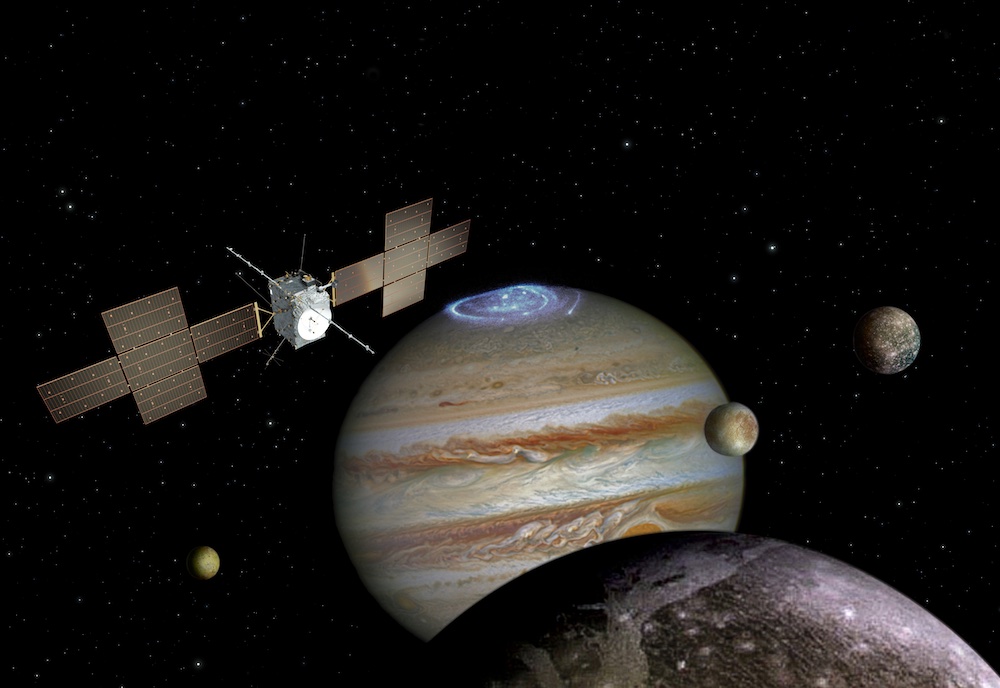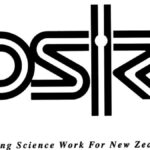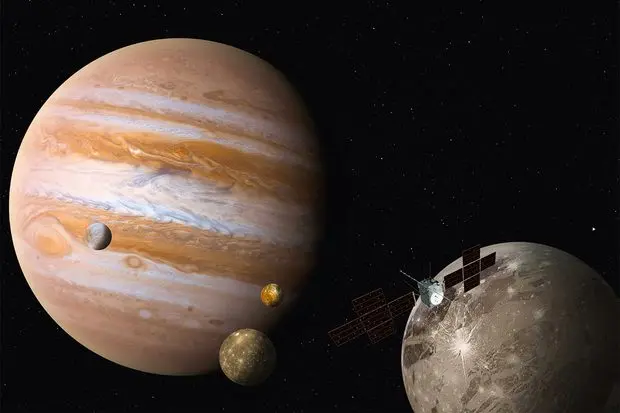Exploring Jupiter’s Icy Moons: ESA’s Juice Mission Set to Launch in 2024
The European Space Agency (ESA) is all set to launch its JUpiter ICy moons Explorer (JUICE) mission in 2024. The mission aims to explore Jupiter’s icy moons, Ganymede, Europa, and Callisto, and study the planet’s environment and its magnetosphere. The spacecraft is expected to arrive at Jupiter in 2029 and spend at least three years studying the gas giant and its moons.
Jupiter’s icy moons are of particular interest to scientists because they are believed to contain vast amounts of water, which could potentially support life. The JUICE mission will focus on studying these moons to understand their geology, surface features, and potential habitability. The mission will also study Jupiter’s magnetosphere, which is the largest structure in the solar system, to understand how it interacts with the planet and its moons.
The JUICE spacecraft is equipped with a suite of scientific instruments, including cameras, spectrometers, and radar, that will enable it to study the moons and Jupiter in detail. The spacecraft will also carry a lander that will be deployed on Ganymede, making it the first time a spacecraft has landed on an icy moon.
The mission is a collaborative effort between the ESA and several national space agencies, including NASA, which is providing key components for the spacecraft. The JUICE mission is expected to cost around €4.5 billion, making it one of the largest and most complex missions ever undertaken by the ESA.

Why This News is Important:
The JUICE mission is an important development in space exploration, particularly in the study of Jupiter’s icy moons. These moons are believed to contain vast amounts of water, which could potentially support life. The mission will enable scientists to study the geology, surface features, and potential habitability of these moons in detail, and will also shed light on Jupiter’s magnetosphere.
The mission is also significant because it is a collaborative effort between the ESA and several national space agencies, including NASA. This demonstrates the importance of international cooperation in space exploration, which can lead to breakthroughs in scientific understanding and technological advancement.
Historical Context:
Jupiter has been a focus of scientific exploration for decades, with several spacecraft missions sent to study the planet and its moons. The Galileo mission, launched by NASA in 1989, was the first spacecraft to orbit Jupiter and provided valuable data on the planet and its moons. The Cassini spacecraft, launched by NASA in 1997, also conducted flybys of Jupiter on its way to Saturn, providing additional data on the planet and its moons.
The JUICE mission builds on these previous missions and aims to study Jupiter and its moons in even greater detail. The mission was first proposed by the ESA in 2012 and was approved in 2014. Since then, scientists and engineers have been working on developing the spacecraft and its scientific instruments.
5 Key Takeaways from “Exploring Jupiter’s Icy Moons: ESA’s Juice Mission Set to Launch in 2024”
| Takeaway # | Key Takeaway |
|---|---|
| 1 | The European Space Agency plans to launch its JUpiter ICy moons Explorer (JUICE) mission in 2024 to explore Jupiter’s icy moons. |
| 2 | The mission will study Ganymede, Europa, and Callisto, which are believed to contain vast amounts of water that could potentially support life. |
| 3 | The JUICE spacecraft is equipped with scientific instruments, including cameras, spectrometers, and radar, that will enable it to study the moons and Jupiter in detail. |
| 4 | The spacecraft will carry a lander that will be deployed on Ganymede, making it the first time a spacecraft has landed on an icy moon. |
| 5 | The JUICE mission is a collaborative effort between the ESA and several national space agencies, including NASA, and is expected to cost around €4.5 billion, making it one of the largest and most complex missions ever undertaken by the ESA. |
Important FAQs for Students from this News
Q: What is the JUpiter ICy moons Explorer (JUICE) mission
? A: The JUICE mission is a spacecraft mission that the European Space Agency (ESA) plans to launch in 2024. Its objective is to study Jupiter and its icy moons, including Ganymede, Europa, and Callisto.
Q: What is the significance of exploring Jupiter’s icy moons?
A: Jupiter’s icy moons are believed to contain vast amounts of water that could potentially support life. Exploring these moons could provide important insights into the origins of the solar system and the potential for life beyond Earth.
Q: What scientific instruments will the JUICE spacecraft carry?
A: The JUICE spacecraft is equipped with scientific instruments, including cameras, spectrometers, and radar, that will enable it to study Jupiter and its moons in detail.
Q: Will the JUICE mission involve landing on any of Jupiter’s icy moons?
A: Yes, the JUICE mission will carry a lander that will be deployed on Ganymede, making it the first time a spacecraft has landed on an icy moon.
Q: How much is the JUICE mission expected to cost?
A: The JUICE mission is expected to cost around €4.5 billion, making it one of the largest and most complex missions ever undertaken by the ESA.
Some Important Current Affairs Links

















